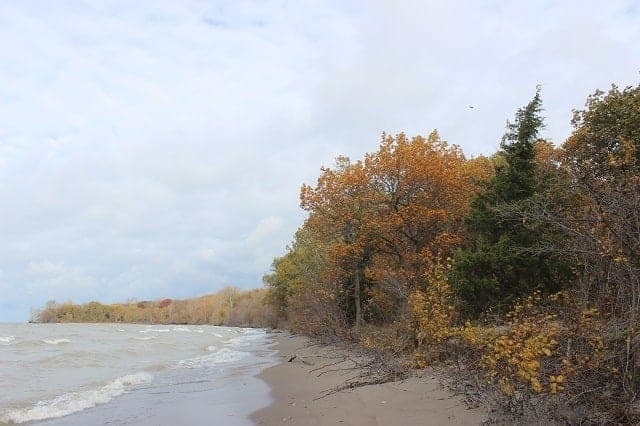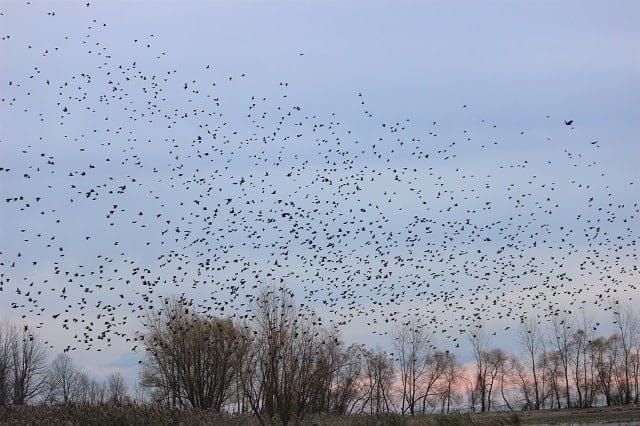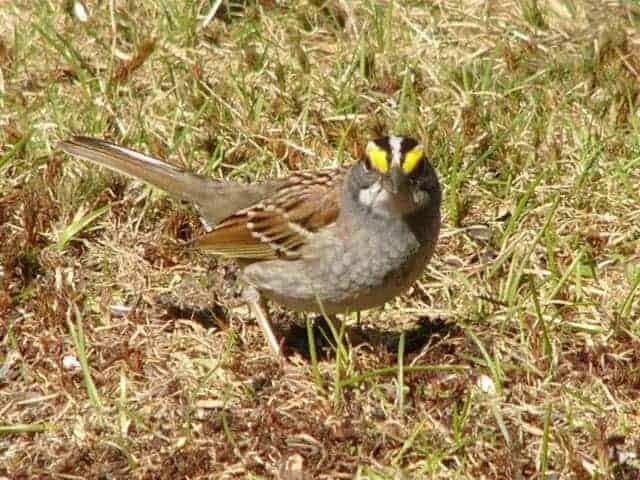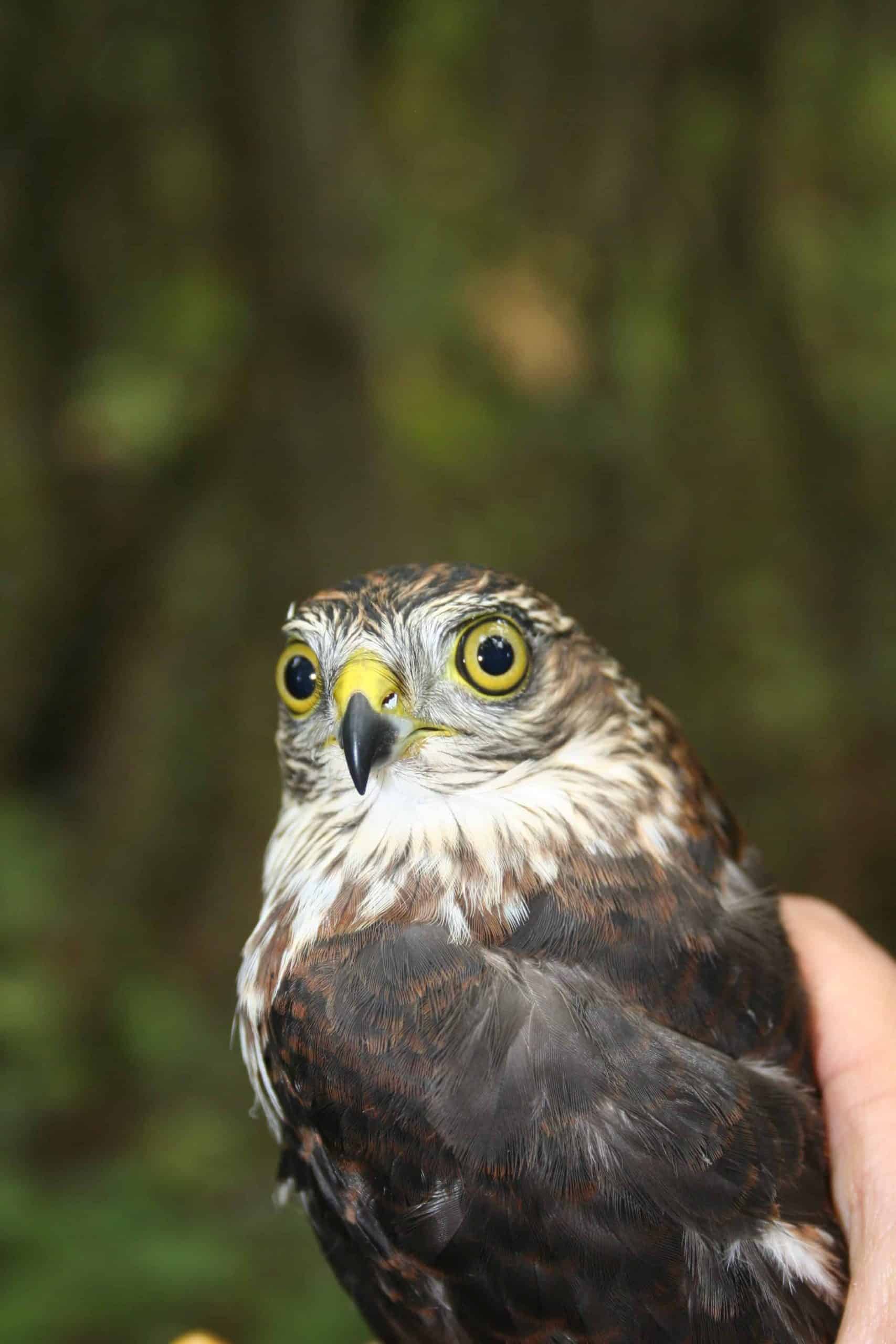
The start of this 2- week period seemed more like summer than fall with green leaves on the trees and warm temperatures. The forest floor had a beautiful carpet of fallen leaves in reds, oranges, and golds.
On the 16th it was very windy and a jaeger (closely related to gulls) was seen on the 90- minute census. It was likely a Parasitic Jaeger, but was too far out in Lake Erie for a positive identification.
When the winds dropped, it brought our best day of the migration season yet with 93 individuals of thirteen species banded on October 18th. Five new (for the fall) sparrows showed up: White-Crowned, Fox, Song, Lincoln’s and Dark-eyed Junco. An American Woodcock was also seen. Three people joined me on the census and they were thrilled to see the same birds being banded that we had seen in the woods at Fish Point. They were amazed at how much smaller a bird in the hand looks.
The first Northern Saw-whet Owl of the season was banded at 8 p.m. on October 18th.
On October 19th we had the biggest day of the season with 101 birds banded at the banding station and an Eastern Screech Owl banded in the evening during the Still Standing event at the PIBO cottage. This event was well attended with an estimated 80 people present plus the t.v. crew. Everyone enjoyed mulled wine, hot apple cider, owl cupcakes, cookies and many other treats.
After our big day, things were quiet at the banding station and on October 23rd no birds were trapped.
One Eastern Screech Owl and 4 Northern Saw-whet Owls were banded on the evening of October 25th, but our public owling night on the 26th was postponed due to heavy rain and high winds. No owls were trapped on the alternate date (27th).
By October 28th many of the leaves had fallen, as well as branches and a big tree over the path at Fish Point. The first Red-breasted Nuthatch of the season was seen on census as well as a Clay-coloured Sparrow. A vocal Greater Yellowlegs flew over the banding station.
A late warbler – a Yellow-rumped, also known as Myrtle Warbler was banded on October 29th.
The most commonly banded bird during this summary period was the Ruby-crowned Kinglet with 87 banded followed by the Hermit Thrush with 73 banded, and the Golden-crowned Kinglet with 61 banded.
There are still dark purple Carrion Flower and Pokeweed berries in the woods as well as the white berries of the dogwood trees which the late migrants are feeding on.
A few snakes have been soaking up the sun in preparation for hibernation. A very young Eastern Fox Snake was encouraged to leave the road on October 21st in the vicinity of the old marina. I was surprised to see a Blue Racer, a gorgeous turquoise snake with a black line through the eye, on PIBO property on October 17th!
Although no Dragonflies were observed during this time, butterflies were seen until the 20th on census. 2 migratory Monarchs and a Mourning Cloak which will overwinter were seen on this date. A late Buckeye was found on the Fish Point beach on the 17th of October. A few Cabbage Whites and Clouded Sulphur Butterflies were seen flitting in the ditches until Hallowe’en.
As the days grow shorter, fewer migrants are being banded, and the season is winding down. Hope to see you in the spring. Don’t forget to watch Still Standing – the Pelee Island version. The date has yet to be announced but it will be on Season 6.
By Kathy Parker
Photo of Fish Point by Sumiko Onishi 2019






